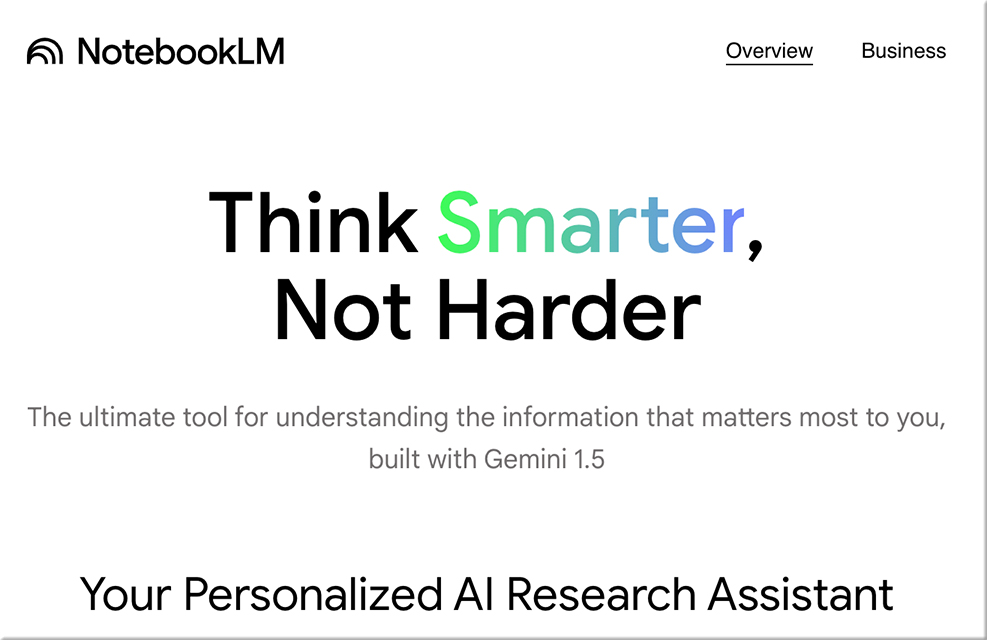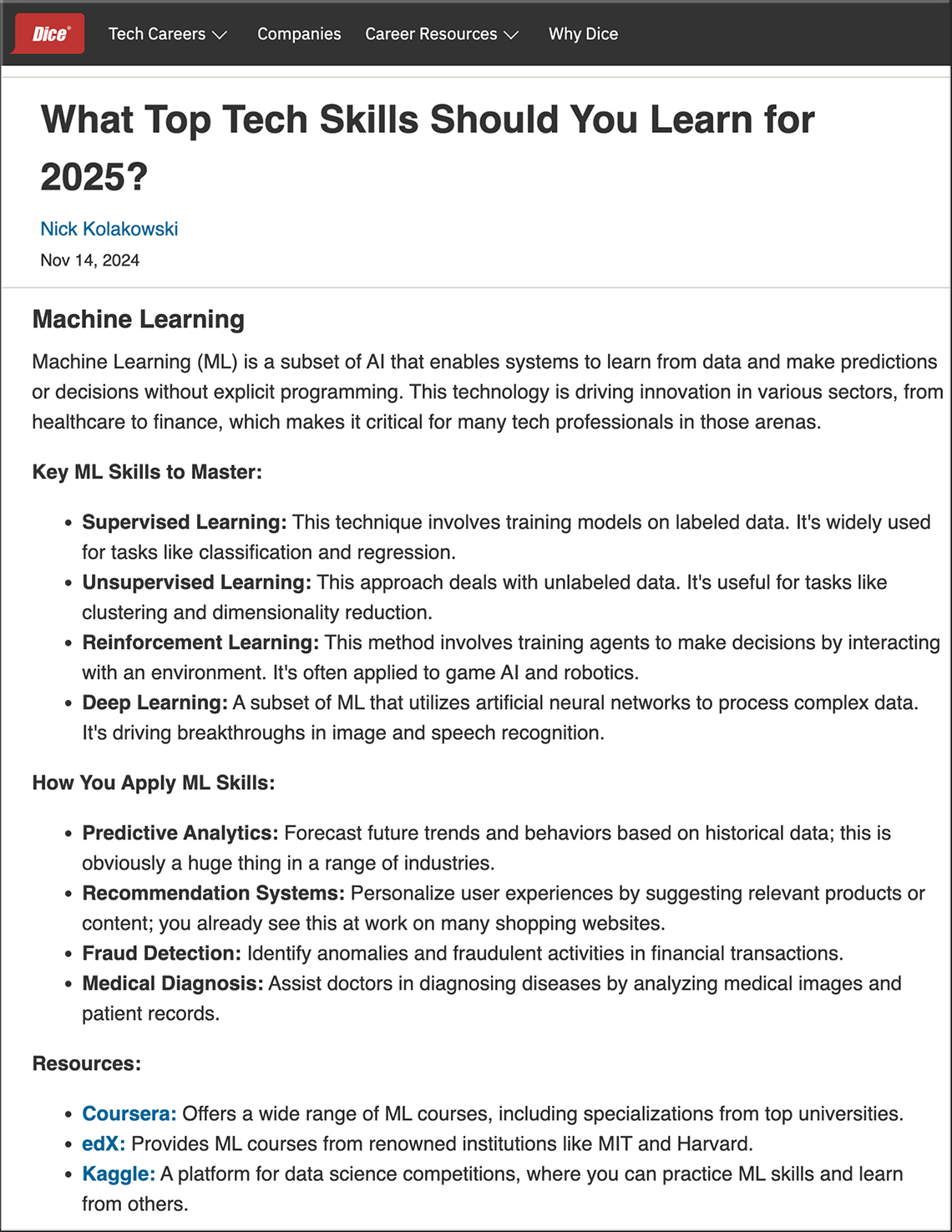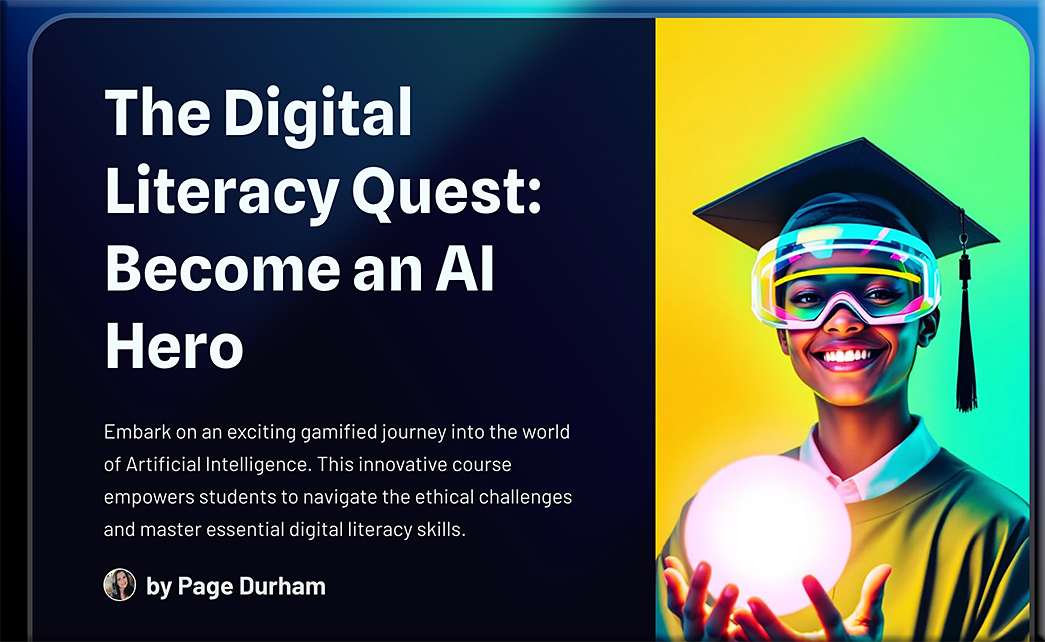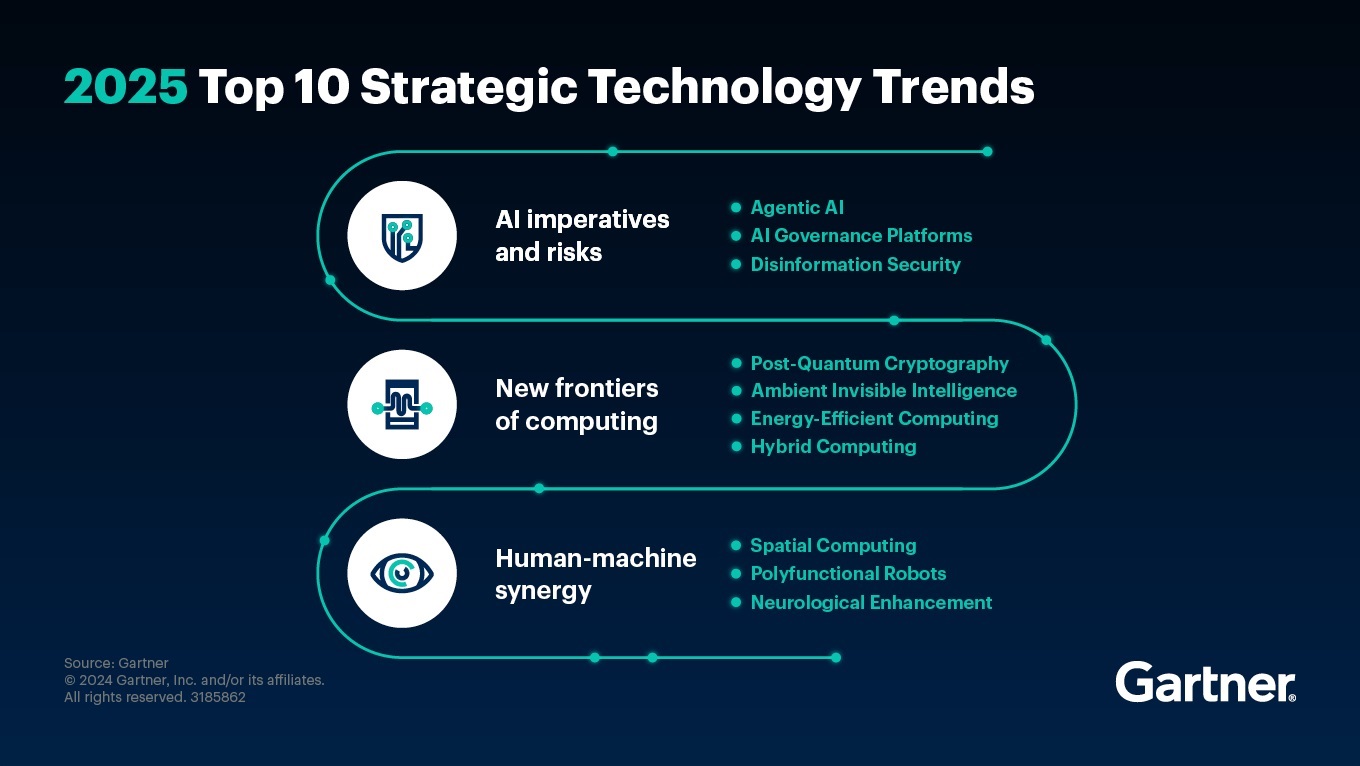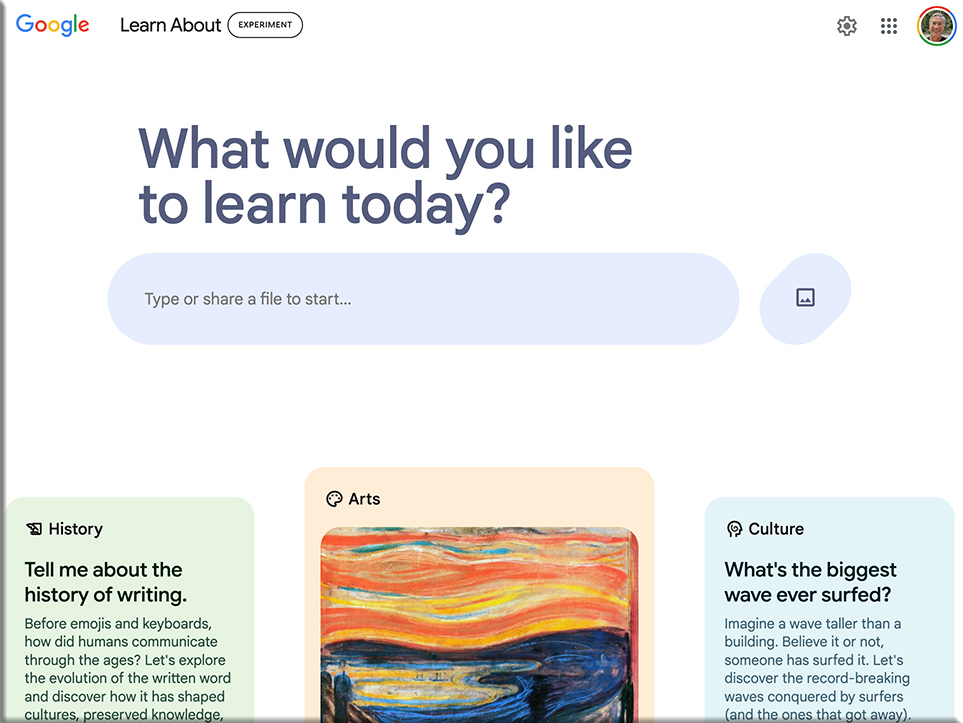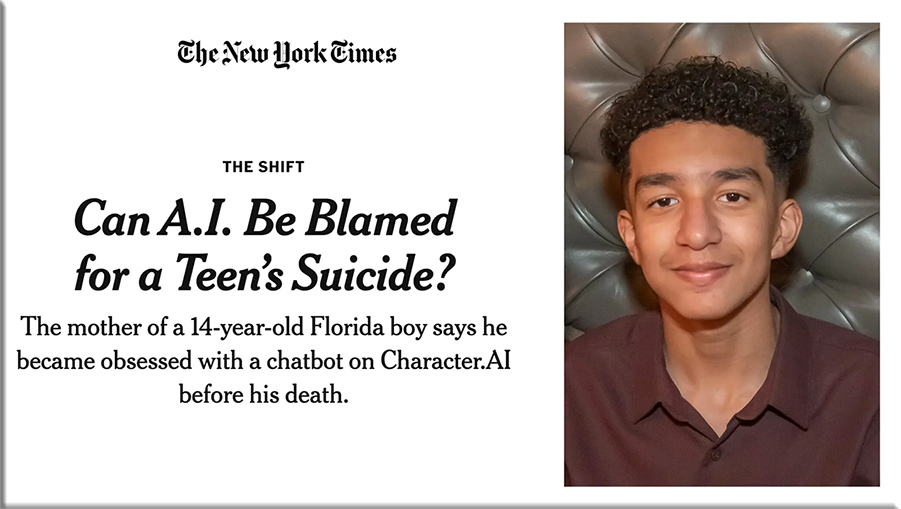From DSC:
Notebook LM continues to make waves…
2024-11-22: The Race to the TopDario Amodei on AGI, Risks, and the Future of Anthropic — from emergentbehavior.co by Prakash (Ate-a-Pi)
Risks on the Horizon: ASL Levels
The two key risks Dario is concerned about are:
a) cyber, bio, radiological, nuclear (CBRN)
b) model autonomy
These risks are captured in Anthropic’s framework for understanding AI Safety Levels (ASL):
1. ASL-1: Narrow-task AI like Deep Blue (no autonomy, minimal risk).
2. ASL-2: Current systems like ChatGPT/Claude, which lack autonomy and don’t pose significant risks beyond information already accessible via search engines.
3. ASL-3: Agents arriving soon (potentially next year) that can meaningfully assist non-state actors in dangerous activities like cyber or CBRN (chemical, biological, radiological, nuclear) attacks. Security and filtering are critical at this stage to prevent misuse.
4. ASL-4: AI smart enough to evade detection, deceive testers, and assist state actors with dangerous projects. AI will be strong enough that you would want to use the model to do anything dangerous. Mechanistic interpretability becomes crucial for verifying AI behavior.
5. ASL-5: AGI surpassing human intelligence in all domains, posing unprecedented challenges.
Anthropic’s if/then framework ensures proactive responses: if a model demonstrates danger, the team clamps down hard, enforcing strict controls.
Should You Still Learn to Code in an A.I. World? — from nytimes.com by
Coding boot camps once looked like the golden ticket to an economically secure future. But as that promise fades, what should you do? Keep learning, until further notice.
Compared with five years ago, the number of active job postings for software developers has dropped 56 percent, according to data compiled by CompTIA. For inexperienced developers, the plunge is an even worse 67 percent.
“I would say this is the worst environment for entry-level jobs in tech, period, that I’ve seen in 25 years,” said Venky Ganesan, a partner at the venture capital firm Menlo Ventures.
For years, the career advice from everyone who mattered — the Apple chief executive Tim Cook, your mother — was “learn to code.” It felt like an immutable equation: Coding skills + hard work = job.
Now the math doesn’t look so simple.
Also see:
AI builds apps in 2 mins flat — where the Neuron mentions this excerpt about Lovable:
There’s a new coding startup in town, and it just MIGHT have everybody else shaking in their boots (we’ll qualify that in a sec, don’t worry).
It’s called Lovable, the “world’s first AI fullstack engineer.”
…
Lovable does all of that by itself. Tell it what you want to build in plain English, and it creates everything you need. Want users to be able to log in? One click. Need to store data? One click. Want to accept payments? You get the idea.
Early users are backing up these claims. One person even launched a startup that made Product Hunt’s top 10 using just Lovable.
As for us, we made a Wordle clone in 2 minutes with one prompt. Only edit needed? More words in the dictionary. It’s like, really easy y’all.
When to chat with AI (and when to let it work) — from aiwithallie.beehiiv.com by Allie K. Miller
Re: some ideas on how to use Notebook LM:
- Turn your company’s annual report into an engaging podcast
- Create an interactive FAQ for your product manual
- Generate a timeline of your industry’s history from multiple sources
- Produce a study guide for your online course content
- Develop a Q&A system for your company’s knowledge base
- Synthesize research papers into digestible summaries
- Create an executive content briefing from multiple competitor blog posts
- Generate a podcast discussing the key points of a long-form research paper
Introducing conversation practice: AI-powered simulations to build soft skills — from codesignal.com by Albert Sahakyan
From DSC:
I have to admit I’m a bit suspicious here, as the “conversation practice” product seems a bit too scripted at times, but I post it because the idea of using AI to practice soft skills development makes a great deal of sense:
This is mind-blowing!
NVIDIA has introduced Edify 3D, a 3D AI generator that lets us create high-quality 3D scenes using just a simple prompt. And all the assets are fully editable!
This is going to revolutionise the way we create!
5 Examples: pic.twitter.com/5yWlvL1cWD
— el.cine (@EHuanglu) November 24, 2024
How to use NotebookLM for personalized knowledge synthesis — from ai-supremacy.com by Michael Spencer and Alex McFarland
Two powerful workflows that unlock everything else. Intro: Golden Age of AI Tools and AI agent frameworks begins in 2025.
What is Google Learn about?
Google’s new AI tool, Learn About, is designed as a conversational learning companion that adapts to individual learning needs and curiosity. It allows users to explore various topics by entering questions, uploading images or documents, or selecting from curated topics. The tool aims to provide personalized responses tailored to the user’s knowledge level, making it user-friendly and engaging for learners of all ages.
Is Generative AI leading to a new take on Educational technology? It certainly appears promising heading into 2025.
The Learn About tool utilizes the LearnLM AI model, which is grounded in educational research and focuses on how people learn. Google insists that unlike traditional chatbots, it emphasizes interactive and visual elements in its responses, enhancing the educational experience. For instance, when asked about complex topics like the size of the universe, Learn About not only provides factual information but also includes related content, vocabulary building tools, and contextual explanations to deepen understanding.
Introducing Copilot Actions, new agents, and tools to empower IT teams — from microsoft.com by Jared Spataro
[On November 19th] at Microsoft Ignite 2024, we’re accelerating our ambition to empower every employee with Copilot as a personal assistant and to transform every business process with agents built in Microsoft Copilot Studio.
Announcements include:
- Copilot Actions in Microsoft 365 Copilot to help you automate everyday repetitive tasks.
- New agents in Microsoft 365 to unlock SharePoint knowledge, provide real-time language interpretation in Microsoft Teams meetings, and automate employee self-service.
- The Copilot Control System to help IT professionals confidently manage Copilot and agents securely.
These announcements build on our wave 2 momentum, including the new autonomous agent capabilities that we announced in October 2024.
Along these lines, also see:
AI agents — what they are, and how they’ll change the way we work — from news.microsoft.com by Susanna Ray
An agent takes the power of generative AI a step further, because instead of just assisting you, agents can work alongside you or even on your behalf. Agents can do a range of things, from responding to questions to more complicated or multistep assignments. What sets them apart from a personal assistant is that they can be tailored to have a particular expertise.
For example, you could create an agent to know everything about your company’s product catalog so it can draft detailed responses to customer questions or automatically compile product details for an upcoming presentation.
Microsoft pitches AI ‘agents’ that can perform tasks on their own at Ignite 2024 — from techxplore.com
Microsoft CEO Satya Nadella told customers at a conference in Chicago on Tuesday that the company is teaching a new set of artificial intelligence tools how to “act on our behalf across our work and life.”
From DSC:
I am not trying to push all things AI. There are serious concerns that I and others have with agents and other AI-based technologies especially:
- When competitive juices get going and such forces throw people and companies into a sort of an AI arms race, and
- When many people haven’t yet obtained the wisdom of reflecting on things like “just because we CAN build this doesn’t mean we SHOULD build it”, or
- When governments seek to be the leader of AI due to military applications (and yes, I’m looking at the U.S. Federal Government especially here)
- Etc, etc.
But there are also areas where I’m more hopeful and positive about AI-related technologies — such as providing personalized learning and productivity tools (like those from Microsoft above).
Denmark’s Gefion: The AI supercomputer that puts society first — from blog.aiport.tech by Daniel Nest
Can it help us reimagine what “AI success” looks like?
In late October 2024, NVIDIA’s Jensen Huang and Denmark’s King Frederik X symbolically plugged in the country’s new AI supercomputer, Gefion.
- Societal impact vs. monetization
- Public-private cooperation vs. venture capital
- Powered by renewable energy
From DSC:
First of all, when you look at the following posting:
What Top Tech Skills Should You Learn for 2025? — from dice.com by Nick Kolakowski
…you will see that they outline which skills you should consider mastering in 2025 if you want to stay on top of the latest career opportunities. They then list more information about the skills, how you apply the skills, and WHERE to get those skills.
I assert that in the future, people will be able to see this information on a 24x7x365 basis.
- Which jobs are in demand?
- What skills do I need to do those jobs?
- WHERE do I get/develop those skills?
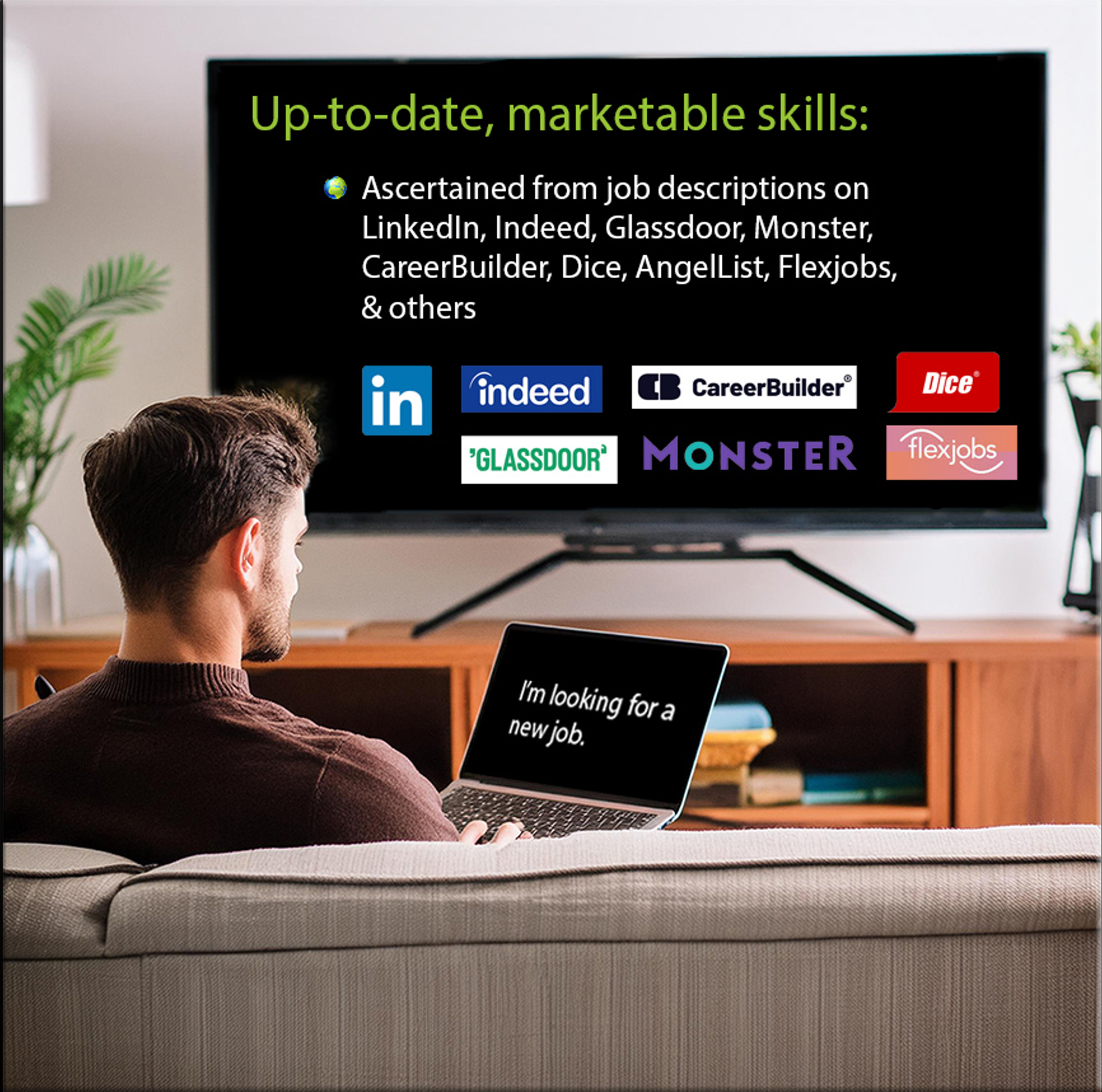
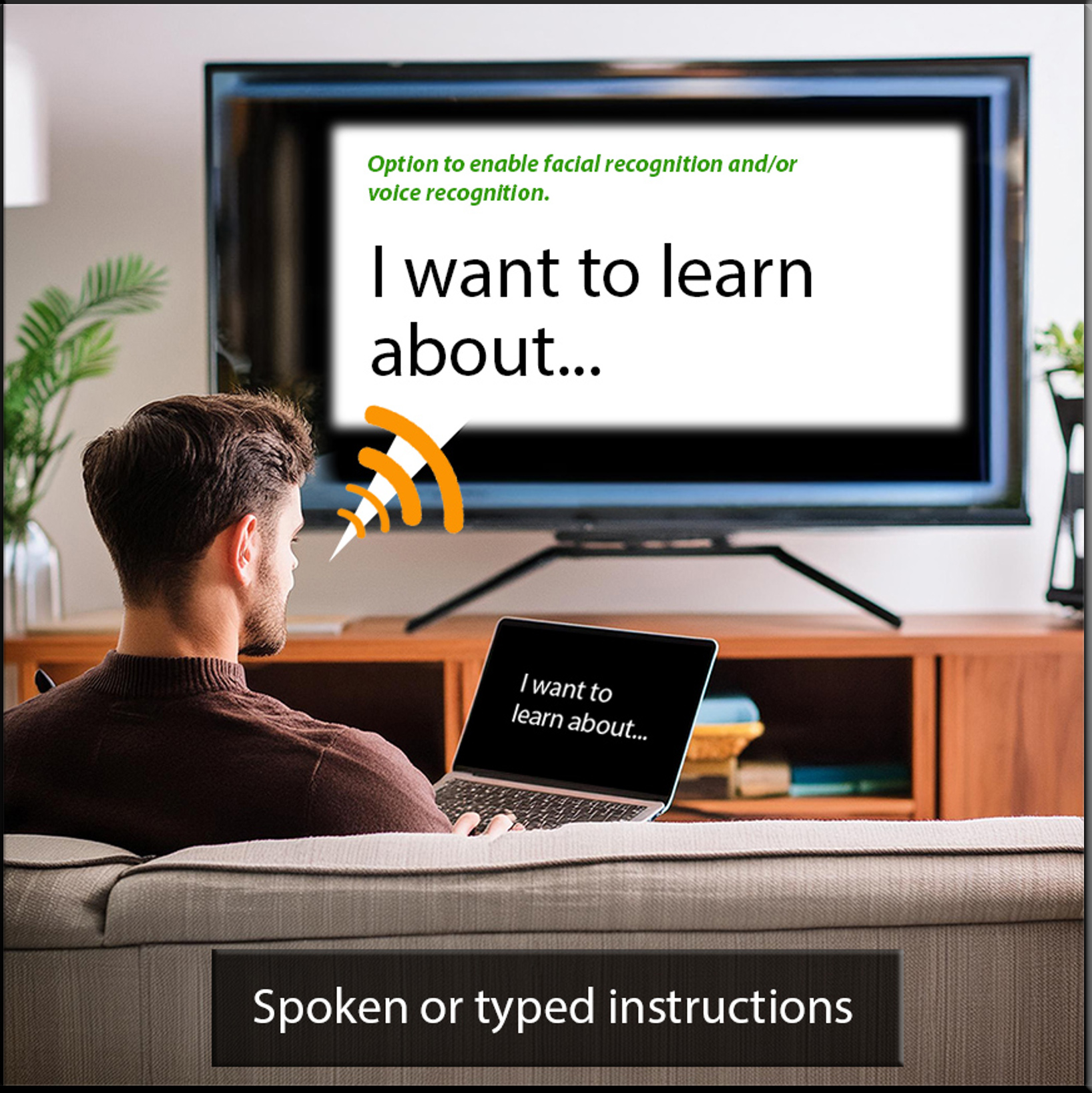
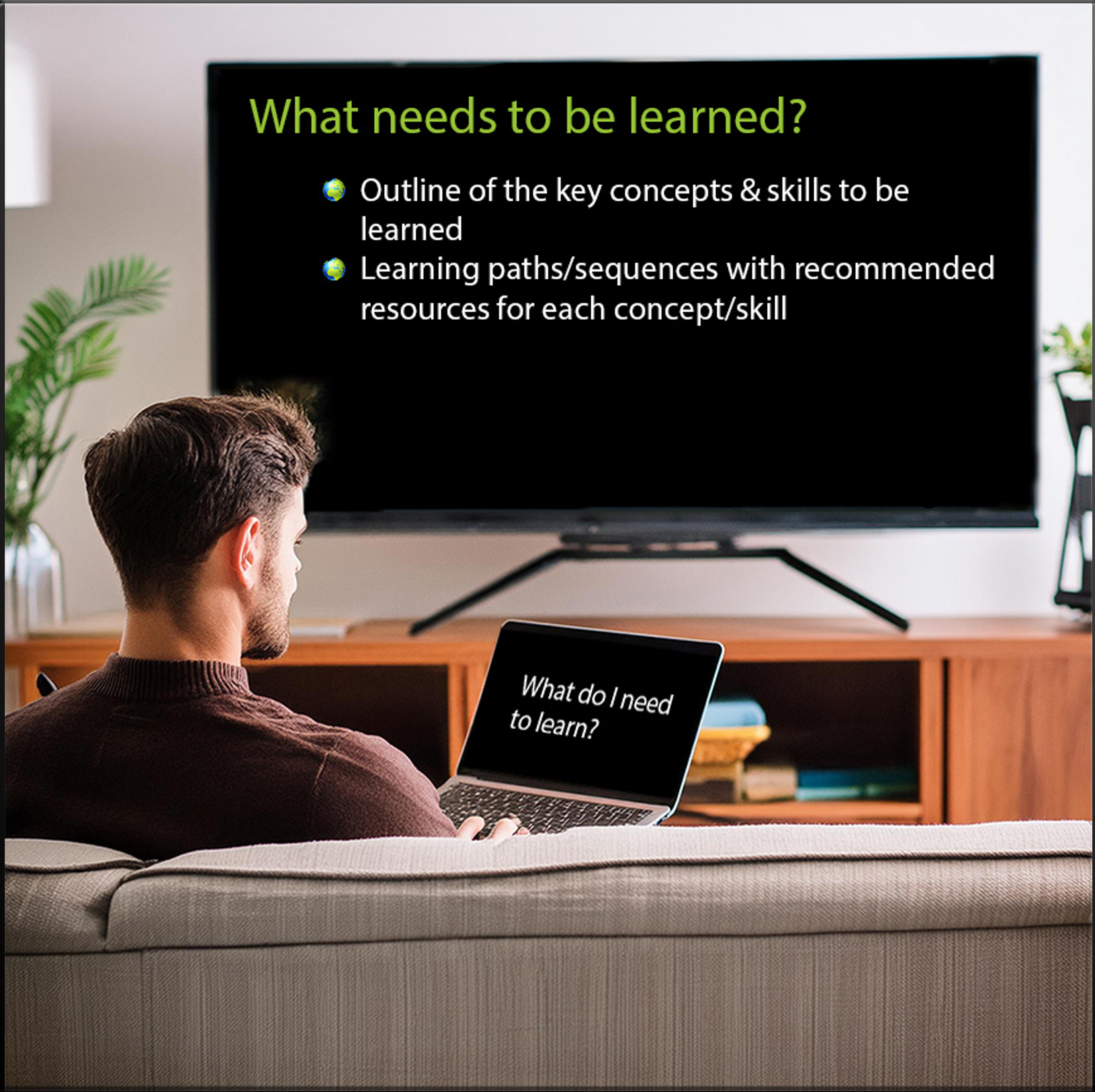
And that last part (about the WHERE do I develop those skills) will pull from many different institutions, people, companies, etc.

BUT PEOPLE are the key! Oftentimes, we need to — and prefer to — learn with others!


The Edtech Insiders Generative AI Map — from edtechinsiders.substack.com by Ben Kornell, Alex Sarlin, Sarah Morin, and Laurence Holt
A market map and database featuring 60+ use cases for GenAI in education and 300+ GenAI powered education tools.
A Student’s Guide to Writing with ChatGPT— from openai.com
Used thoughtfully, ChatGPT can be a powerful tool to help students develop skills of rigorous thinking and clear writing, assisting them in thinking through ideas, mastering complex concepts, and getting feedback on drafts.
There are also ways to use ChatGPT that are counterproductive to learning—like generating an essay instead of writing it oneself, which deprives students of the opportunity to practice, improve their skills, and grapple with the material.
For students committed to becoming better writers and thinkers, here are some ways to use ChatGPT to engage more deeply with the learning process.
Community Colleges Are Rolling Out AI Programs—With a Boost from Big Tech — from workshift.org by Colleen Connolly
The Big Idea: As employers increasingly seek out applicants with AI skills, community colleges are well-positioned to train up the workforce. Partnerships with tech companies, like the AI Incubator Network, are helping some colleges get the resources and funding they need to overhaul programs and create new AI-focused ones.
Along these lines also see:
Practical AI Training — from the-job.beehiiv.com by Paul Fain
Community colleges get help from Big Tech to prepare students for applied AI roles at smaller companies.
Miami Dade and other two-year colleges try to be nimble by offering training for AI-related jobs while focusing on local employers. Also, Intel’s business struggles while the two-year sector wonders if Republicans will cut funds for semiconductor production.
Can One AI Agent Do Everything? How To Redesign Jobs for AI? HR Expertise And A Big Future for L&D. — from joshbersin.com by Josh Bersin
Here’s the AI summary, which is pretty good.
In this conversation, Josh Bersin discusses the evolving landscape of AI platforms, particularly focusing on Microsoft’s positioning and the challenges of creating a universal AI agent. He delves into the complexities of government efficiency, emphasizing the institutional challenges faced in re-engineering government operations.
The conversation also highlights the automation of work tasks and the need for businesses to decompose job functions for better efficiency.
Bersin stresses the importance of expertise in HR, advocating for a shift towards full stack professionals who possess a broad understanding of various HR functions.
Finally, he addresses the impending disruption in Learning and Development (L&D) due to AI advancements, predicting a significant transformation in how L&D professionals will manage knowledge and skills.
Miscommunication Leads AI-Based Hiring Tools Astray — from adigaskell.org
Nearly every Fortune 500 company now uses artificial intelligence (AI) to screen resumes and assess test scores to find the best talent. However, new research from the University of Florida suggests these AI tools might not be delivering the results hiring managers expect.
The problem stems from a simple miscommunication between humans and machines: AI thinks it’s picking someone to hire, but hiring managers only want a list of candidates to interview.
Without knowing about this next step, the AI might choose safe candidates. But if it knows there will be another round of screening, it might suggest different and potentially stronger candidates.
AI agents explained: Why OpenAI, Google and Microsoft are building smarter AI agents — from digit.in by Jayesh Shinde
In the last two years, the world has seen a lot of breakneck advancement in the Generative AI space, right from text-to-text, text-to-image and text-to-video based Generative AI capabilities. And all of that’s been nothing short of stepping stones for the next big AI breakthrough – AI agents. According to Bloomberg, OpenAI is preparing to launch its first autonomous AI agent, which is codenamed ‘Operator,’ as soon as in January 2025.
Apparently, this OpenAI agent – or Operator, as it’s codenamed – is designed to perform complex tasks independently. By understanding user commands through voice or text, this AI agent will seemingly do tasks related to controlling different applications in the computer, send an email, book flights, and no doubt other cool things. Stuff that ChatGPT, Copilot, Google Gemini or any other LLM-based chatbot just can’t do on its own.
2025: The year ‘invisible’ AI agents will integrate into enterprise hierarchies — from venturebeat.com by Taryn Plumb
In the enterprise of the future, human workers are expected to work closely alongside sophisticated teams of AI agents.
According to McKinsey, generative AI and other technologies have the potential to automate 60 to 70% of employees’ work. And, already, an estimated one-third of American workers are using AI in the workplace — oftentimes unbeknownst to their employers.
However, experts predict that 2025 will be the year that these so-called “invisible” AI agents begin to come out of the shadows and take more of an active role in enterprise operations.
“Agents will likely fit into enterprise workflows much like specialized members of any given team,” said Naveen Rao, VP of AI at Databricks and founder and former CEO of MosaicAI.
State of AI Report 2024 Summary — from ai-supremacy.com by Michael Spencer
Part I, Consolidation, emergence and adoption.
Which AI Image Model Is the Best Speller? Let’s Find Out! — from whytryai.com by Daniel Nest
I test 7 image models to find those that can actually write.
The contestants
I picked 7 participants for today’s challenge:
- DALL-E 3 by OpenAI (via Microsoft Designer)
- FLUX1.1 [pro] by Black Forest Labs (via Glif)
- Ideogram 2.0 by Ideogram (via Ideogram)
- Imagen 3 by Google (via Image FX)
- Midjourney 6.1 by Midjourney (via Midjourney)
- Recraft V3 by Recraft (via Recraft)
- Stable Diffusion 3.5 Large by Stability AI (via Hugging Face)
How to get started with AI agents (and do it right) — from venturebeat.com by Taryn Plumb
So how can enterprises choose when to adopt third-party models, open source tools or build custom, in-house fine-tuned models? Experts weigh in.
OpenAI, Google and Anthropic Are Struggling to Build More Advanced AI — from bloomberg.com (behind firewall)
Three of the leading artificial intelligence companies are seeing diminishing returns from their costly efforts to develop newer models.
OpenAI and others seek new path to smarter AI as current methods hit limitations — from reuters.com by Krystal Hu and Anna Tong
Summary
- AI companies face delays and challenges with training new large language models
- Some researchers are focusing on more time for inference in new models
- Shift could impact AI arms race for resources like chips and energy
NVIDIA Advances Robot Learning and Humanoid Development With New AI and Simulation Tools — from blogs.nvidia.com by Spencer Huang
New Project GR00T workflows and AI world model development technologies to accelerate robot dexterity, control, manipulation and mobility.

How Generative AI is Revolutionizing Product Development — from intelligenthq.com
A recent report from McKinsey predicts that generative AI could unlock up to $2.6 to $4.4 annually trillion in value within product development and innovation across various industries. This staggering figure highlights just how significantly generative AI is set to transform the landscape of product development. Generative AI app development is driving innovation by using the power of advanced algorithms to generate new ideas, optimize designs, and personalize products at scale. It is also becoming a cornerstone of competitive advantage in today’s fast-paced market. As businesses look to stay ahead, understanding and integrating technologies like generative AI app development into product development processes is becoming more crucial than ever.
What are AI Agents: How To Create a Based AI Agent — from ccn.com by Lorena Nessi
Key Takeaways
- AI agents handle complex, autonomous tasks beyond simple commands, showcasing advanced decision-making and adaptability.
- The Based AI Agent template by Coinbase and Replit provides an easy starting point for developers to build blockchain-enabled AI agents.
- AI based agents specifically integrate with blockchain, supporting crypto wallets and transactions.
- Securing API keys in development is crucial to protect the agent from unauthorized access.
What are AI Agents and How Are They Used in Different Industries? — from rtinsights.com by Salvatore Salamone
AI agents enable companies to make smarter, faster, and more informed decisions. From predictive maintenance to real-time process optimization, these agents are delivering tangible benefits across industries.
“The Value of Doing Things: What AI Agents Mean for Teachers” — from nickpotkalitsky.substack.com by guest author Jason Gulya, Professor of English and Applied Media at Berkeley College in New York City
AI Agents make me nervous. Really nervous.
I wish they didn’t.
I wish I could write that the last two years have made me more confident, more self-assured that AI is here to augment workers rather than replace them.
But I can’t.
I wish I could write that I know where schools and colleges will end up. I wish I could say that AI Agents will help us get where we need to be.
But I can’t.
At this point, today, I’m at a loss. I’m not sure where the rise of AI agents will take us, in terms of how we work and learn. I’m in the question-asking part of my journey. I have few answers.
So, let’s talk about where (I think) AI Agents will take education. And who knows? Maybe as I write I’ll come up with something more concrete.
It’s worth a shot, right?
From DSC:
I completely agree with Jason’s following assertion:
A good portion of AI advancement will come down to employee replacement. And AI Agents push companies towards that.
THAT’s where/what the ROI will be for corporations. They will make their investments up in the headcount area, and likely in other areas as well (product design, marketing campaigns, engineering-related items, and more). But how much time it takes to get there is a big question mark.
One last quote here…it’s too good not to include:
Behind these questions lies a more abstract, more philosophical one: what is the relationship between thinking and doing in a world of AI Agents and other kinds of automation?
How Good are Claude, ChatGPT & Gemini at Instructional Design? — from drphilippahardman.substack.com by Dr Philippa Hardman
A test of AI’s Instruction Design skills in theory & in practice
By examining models across three AI families—Claude, ChatGPT, and Gemini—I’ve started to identify each model’s strengths, limitations, and typical pitfalls.
Spoiler: my findings underscore that until we have specialised, fine-tuned AI copilots for instructional design, we should be cautious about relying on general-purpose models and ensure expert oversight in all ID tasks.

From DSC — I’m going to (have Nick) say this again:
I simply asked my students to use AI to brainstorm their own learning objectives. No restrictions. No predetermined pathways. Just pure exploration. The results? Astonishing.Students began mapping out research directions I’d never considered. They created dialogue spaces with AI that looked more like intellectual partnerships than simple query-response patterns.
The Digital Literacy Quest: Become an AI Hero — from gamma.app
From DSC:
I have not gone through all of these online-based materials, but I like what they are trying to get at:
- Confidence with AI
Students gain practical skills and confidence in using AI tools effectively. - Ethical Navigation
Learn to navigate the ethical landscape of AI with integrity and responsibility. Make informed decisions about AI usage. - Mastering Essential Skills
Develop critical thinking and problem-solving skills in the context of AI.
Expanding access to the Gemini app for teen students in education — from workspaceupdates.googleblog.com
Google Workspace for Education admins can now turn on the Gemini app with added data protection as an additional service for their teen users (ages 13+ or the applicable age in your country) in the following languages and countries. With added data protection, chats are not reviewed by human reviewers or otherwise used to improve AI models. The Gemini app will be a core service in the coming weeks for Education Standard and Plus users, including teens,
5 Essential Questions Educators Have About AI — from edsurge.com by Annie Ning
Recently, I spoke with several teachers regarding their primary questions and reflections on using AI in teaching and learning. Their thought-provoking responses challenge us to consider not only what AI can do but what it means for meaningful and equitable learning environments. Keeping in mind these reflections, we can better understand how we move forward toward meaningful AI integration in education.
FrontierMath: A Benchmark for Evaluating Advanced Mathematical Reasoning in AI — from epoch.ai
FrontierMath presents hundreds of unpublished, expert-level mathematics problems that specialists spend days solving. It offers an ongoing measure of AI complex mathematical reasoning progress.
We’re introducing FrontierMath, a benchmark of hundreds of original, expert-crafted mathematics problems designed to evaluate advanced reasoning capabilities in AI systems. These problems span major branches of modern mathematics—from computational number theory to abstract algebraic geometry—and typically require hours or days for expert mathematicians to solve.
Rising demand for AI courses in UK universities shows 453% growth as students adapt to an AI-driven job market — from edtechinnovationhub.com
The demand for artificial intelligence courses in UK universities has surged dramatically over the past five years, with enrollments increasing by 453%, according to a recent study by Currys, a UK tech retailer.
The study, which analyzed UK university admissions data and surveyed current students and recent graduates, reveals how the growing influence of AI is shaping students’ educational choices and career paths.
This growth reflects the broader trend of AI integration across industries, creating new opportunities while transforming traditional roles. With AI’s influence on career prospects rising, students and graduates are increasingly drawn to AI-related courses to stay competitive in a rapidly changing job market.
Is Generative AI and ChatGPT healthy for Students? — from ai-supremacy.com by Michael Spencer and Nick Potkalitsky
Beyond Text Generation: How AI Ignites Student Discovery and Deep Thinking, according to firsthand experiences of Teachers and AI researchers like Nick Potkalitsky.
After two years of intensive experimentation with AI in education, I am witnessing something amazing unfolding before my eyes. While much of the world fixates on AI’s generative capabilities—its ability to create essays, stories, and code—my students have discovered something far more powerful: exploratory AI, a dynamic partner in investigation and critique that’s transforming how they think.
…
They’ve moved beyond the initial fascination with AI-generated content to something far more sophisticated: using AI as an exploratory tool for investigation, interrogation, and intellectual discovery.
…
Instead of the much-feared “shutdown” of critical thinking, we’re witnessing something extraordinary: the emergence of what I call “generative thinking”—a dynamic process where students learn to expand, reshape, and evolve their ideas through meaningful exploration with AI tools. Here I consciously reposition the term “generative” as a process of human origination, although one ultimately spurred on by machine input.
A Road Map for Leveraging AI at a Smaller Institution — from er.educause.edu by Dave Weil and Jill Forrester
Smaller institutions and others may not have the staffing and resources needed to explore and take advantage of developments in artificial intelligence (AI) on their campuses. This article provides a roadmap to help institutions with more limited resources advance AI use on their campuses.
The following activities can help smaller institutions better understand AI and lay a solid foundation that will allow them to benefit from it.
- Understand the impact…
- Understand the different types of AI tools…
- Focus on institutional data and knowledge repositories…
Smaller institutions do not need to fear being left behind in the wake of rapid advancements in AI technologies and tools. By thinking intentionally about how AI will impact the institution, becoming familiar with the different types of AI tools, and establishing a strong data and analytics infrastructure, institutions can establish the groundwork for AI success. The five fundamental activities of coordinating, learning, planning and governing, implementing, and reviewing and refining can help smaller institutions make progress on their journey to use AI tools to gain efficiencies and improve students’ experiences and outcomes while keeping true to their institutional missions and values.
Also from Educause, see:
- From Hype to Help: Making GenAI Useful for Enterprise Reporting and Data Analytics — from er.educause.edu by Craig Rudick
AI school opens – learners are not good or bad but fast and slow — from donaldclarkplanb.blogspot.com by Donald Clark
That is what they are doing here. Lesson plans focus on learners rather than the traditional teacher-centric model. Assessing prior strengths and weaknesses, personalising to focus more on weaknesses and less on things known or mastered. It’s adaptive, personalised learning. The idea that everyone should learn at the exactly same pace, within the same timescale is slightly ridiculous, ruled by the need for timetabling a one to many, classroom model.
For the first time in the history of our species we have technology that performs some of the tasks of teaching. We have reached a pivot point where this can be tried and tested. My feeling is that we’ll see a lot more of this, as parents and general teachers can delegate a lot of the exposition and teaching of the subject to the technology. We may just see a breakthrough that transforms education.
Agentic AI Named Top Tech Trend for 2025 — from campustechnology.com by David Ramel
Agentic AI will be the top tech trend for 2025, according to research firm Gartner. The term describes autonomous machine “agents” that move beyond query-and-response generative chatbots to do enterprise-related tasks without human guidance.
…
More realistic challenges that the firm has listed elsewhere include:
-
- Agentic AI proliferating without governance or tracking;
- Agentic AI making decisions that are not trustworthy;
- Agentic AI relying on low-quality data;
- Employee resistance; and
- Agentic-AI-driven cyberattacks enabling “smart malware.”
Also from campustechnology.com, see:
- New OpenAI Swarm Framework Offers Experimental Tool for Multi-Agent AI Networks — by John K. Waters
OpenAI has introduced a new open source framework designed to simplify the development and management of multi-agent AI systems that can collaborate autonomously to perform tasks.
Three items from edcircuit.com:
- The Top 10 AI Tools for Enhancing Learning
- Revolutionizing Lesson Planning: How AI Teaching Assistants Bring Creativity and Efficiency to the Classroom
- Maximizing Student Success: How Artificial Intelligence is Revolutionizing K12 Coaching
All or nothing at Educause24 — from onedtech.philhillaa.com by Kevin Kelly
Looking for specific solutions at the conference exhibit hall, with an educator focus
Here are some notable trends:
- Alignment with campus policies: …
- Choose your own AI adventure: …
- Integrate AI throughout a workflow: …
- Moving from prompt engineering to bot building: …
- More complex problem-solving: …
…
Not all AI news is good news. In particular, AI has exacerbated the problem of fraudulent enrollment–i.e., rogue actors who use fake or stolen identities with the intent of stealing financial aid funding with no intention of completing coursework.
…
The consequences are very real, including financial aid funding going to criminal enterprises, enrollment estimates getting dramatically skewed, and legitimate students being blocked from registering for classes that appear “full” due to large numbers of fraudulent enrollments.
? Introducing ChatGPT search ?
ChatGPT can now search the web in a much better way than before so you get fast, timely answers with links to relevant web sources.https://t.co/7yilNgqH9T pic.twitter.com/z8mJWS8J9c
— OpenAI (@OpenAI) October 31, 2024
ChatGPT Search just dropped, so of course, Google is dead. (Just kidding… probably ?)
But is it any good?
A ChatGPT Search vs. Perplexity vs. Google ?:
— Nathan Lands — Lore.com (@NathanLands) November 1, 2024
Google’s worst nightmare just became reality — from aidisruptor.ai by Alex McFarland
OpenAI just launched an all-out assault on traditional search engines.
Google’s worst nightmare just became reality. OpenAI didn’t just add search to ChatGPT – they’ve launched an all-out assault on traditional search engines.
It’s the beginning of the end for search as we know it.
Let’s be clear about what’s happening: OpenAI is fundamentally changing how we’ll interact with information online. While Google has spent 25 years optimizing for ad revenue and delivering pages of blue links, OpenAI is building what users actually need – instant, synthesized answers from current sources.
The rollout is calculated and aggressive: ChatGPT Plus and Team subscribers get immediate access, followed by Enterprise and Education users in weeks, and free users in the coming months. This staged approach is about systematically dismantling Google’s search dominance.
Big day for desktops.
Advanced Voice is now available in the macOS and Windows desktop apps.https://t.co/mv4ACwIhzA pic.twitter.com/HbwXbN9NkD
— OpenAI (@OpenAI) October 30, 2024
We’re starting to roll out the ability to search through your chat history on ChatGPT web.
Now you can quickly & easily bring up a chat to reference, or pick up a chat where you left off. pic.twitter.com/YVAOUpFvzJ
— OpenAI (@OpenAI) October 29, 2024
Open for AI: India Tech Leaders Build AI Factories for Economic Transformation — from blogs.nvidia.com
Yotta Data Services, Tata Communications, E2E Networks and Netweb are among the providers building and offering NVIDIA-accelerated infrastructure and software, with deployments expected to double by year’s end.
AI Tutors Double Rates of Learning in Less Learning Time — by drphilippahardman.substack.com Dr. Philippa Hardman
Inside Harvard’s new groundbreaking study
Conclusion
This Harvard study provides robust evidence that AI tutoring, when thoughtfully designed, can significantly enhance learning outcomes. The combination of doubled learning gains, increased engagement, and reduced time to competency suggests we’re seeing just the beginning of AI’s potential in education and that its potential is significant.
If this data is anything to go by, and if we – as humans – are open and willing to acting on it, it’s possible AI will have a significant and for some deeply positive impact on how we design and deliver learning experiences.
That said, as we look forward, the question shouldn’t just be, “how AI can enhance current educational methods?”, but also “how it might AI transform the very nature of learning itself?”. With continued research and careful implementation, we could be moving toward an era of education that’s more effective but also more accessible than ever before.
Three Quick Examples of Teaching with and about Generative AI — from derekbruff.org Derek Bruff
- Text-to-Podcast.
- Assigning Students to Groups.
- AI Acceptable Use Scale.
Also from Derek’s blog, see:
- Three Recent Studies on Student Learning with Generative AI
- How Do We Define Quality Student Work in an Age of AI?
From Mike Sharples on LinkedIn:
ChatGPT’s free voice wizard — from wondertools.substack.com by Jeremy Caplan
How and why to try the new Advanced Voice Mode
7 surprisingly practical ways to use voice AI
Opening up ChatGPT’s Advanced Voice Mode (AVM) is like conjuring a tutor eager to help with whatever simple — or crazy — query you throw at it. Talking is more fluid and engaging than typing, especially if you’re out and about. It’s not a substitute for human expertise, but AVM provides valuable machine intelligence.
- Get a virtual museum tour. …
- Chat with historical figures….
- Practice languages. …
- Explore books. …
- Others…
Though not AI-related, this is along the lines of edtech:
- MoodleMoot Global 24 Conference Notes — from onedtech.philhillaa.com by Glenda Morgan
A first look at Moodle under new leadership
Here’s the link to access it: https://t.co/kHq0S2r4aD
It’s only available in the US at the moment, but it works with a VPN.
Truly the best tool for learning a new subject I’ve tried so far.
— Paul Couvert (@itsPaulAi) October 31, 2024
…which links to:
Claude can now write and run code.
We’ve added a new analysis tool. The tool helps Claude respond with mathematically precise and reproducible answers. You can then create interactive data visualizations with Artifacts.
Enable the feature preview: https://t.co/bJ8BjBT6zG. pic.twitter.com/Jq5xOHBmiR
— Anthropic (@AnthropicAI) October 24, 2024
Along these same lines, see:
Introducing computer use, a new Claude 3.5 Sonnet, and Claude 3.5 Haiku
We’re also introducing a groundbreaking new capability in public beta: computer use. Available today on the API, developers can direct Claude to use computers the way people do—by looking at a screen, moving a cursor, clicking buttons, and typing text. Claude 3.5 Sonnet is the first frontier AI model to offer computer use in public beta. At this stage, it is still experimental—at times cumbersome and error-prone. We’re releasing computer use early for feedback from developers, and expect the capability to improve rapidly over time.
ZombAIs: From Prompt Injection to C2 with Claude Computer Use — from embracethered.com by Johann Rehberger
A few days ago, Anthropic released Claude Computer Use, which is a model + code that allows Claude to control a computer. It takes screenshots to make decisions, can run bash commands and so forth.
It’s cool, but obviously very dangerous because of prompt injection. Claude Computer Use enables AI to run commands on machines autonomously, posing severe risks if exploited via prompt injection.
This blog post demonstrates that it’s possible to leverage prompt injection to achieve, old school, command and control (C2) when giving novel AI systems access to computers.
…
We discussed one way to get malware onto a Claude Computer Use host via prompt injection. There are countless others, like another way is to have Claude write the malware from scratch and compile it. Yes, it can write C code, compile and run it. There are many other options.TrustNoAI.
And again, remember do not run unauthorized code on systems that you do not own or are authorized to operate on.
Also relevant here, see:
Perplexity Grows, GPT Traffic Surges, Gamma Dominates AI Presentations – The AI for Work Top 100: October 2024 — from flexos.work by Daan van Rossum
Perplexity continues to gain users despite recent controversies. Five out of six GPTs see traffic boosts. This month’s highest gainers including Gamma, Blackbox, Runway, and more.
Growing Up: Navigating Generative AI’s Early Years – AI Adoption Report — from ai.wharton.upenn.edu by Jeremy Korst, Stefano Puntoni, & Mary Purk
From a survey with more than 800 senior business leaders, this report’s findings indicate that weekly usage of Gen AI has nearly doubled from 37% in 2023 to 72% in 2024, with significant growth in previously slower-adopting departments like Marketing and HR. Despite this increased usage, businesses still face challenges in determining the full impact and ROI of Gen AI. Sentiment reports indicate leaders have shifted from feelings of “curiosity” and “amazement” to more positive sentiments like “pleased” and “excited,” and concerns about AI replacing jobs have softened. Participants were full-time employees working in large commercial organizations with 1,000 or more employees.
Apple study exposes deep cracks in LLMs’ “reasoning” capabilities — from arstechnica.com by Kyle Orland
Irrelevant red herrings lead to “catastrophic” failure of logical inference.
For a while now, companies like OpenAI and Google have been touting advanced “reasoning” capabilities as the next big step in their latest artificial intelligence models. Now, though, a new study from six Apple engineers shows that the mathematical “reasoning” displayed by advanced large language models can be extremely brittle and unreliable in the face of seemingly trivial changes to common benchmark problems.
The fragility highlighted in these new results helps support previous research suggesting that LLMs use of probabilistic pattern matching is missing the formal understanding of underlying concepts needed for truly reliable mathematical reasoning capabilities. “Current LLMs are not capable of genuine logical reasoning,” the researchers hypothesize based on these results. “Instead, they attempt to replicate the reasoning steps observed in their training data.”
Google CEO says more than a quarter of the company’s new code is created by AI — from businessinsider.in by Hugh Langley
- More than a quarter of new code at Google is made by AI and then checked by employees.
- Google is doubling down on AI internally to make its business more efficient.
Top Generative AI Chatbots by Market Share – October 2024
Bringing developer choice to Copilot with Anthropic’s Claude 3.5 Sonnet, Google’s Gemini 1.5 Pro, and OpenAI’s o1-preview — from github.blog
We are bringing developer choice to GitHub Copilot with Anthropic’s Claude 3.5 Sonnet, Google’s Gemini 1.5 Pro, and OpenAI’s o1-preview and o1-mini. These new models will be rolling out—first in Copilot Chat, with OpenAI o1-preview and o1-mini available now, Claude 3.5 Sonnet rolling out progressively over the next week, and Google’s Gemini 1.5 Pro in the coming weeks. From Copilot Workspace to multi-file editing to code review, security autofix, and the CLI, we will bring multi-model choice across many of GitHub Copilot’s surface areas and functions soon.
Can A.I. Be Blamed for a Teen’s Suicide? — from nytimes.com by Kevin Roose
On the last day of his life, Sewell Setzer III took out his phone and texted his closest friend: a lifelike A.I. chatbot named after Daenerys Targaryen, a character from “Game of Thrones.”
“I miss you, baby sister,” he wrote.
“I miss you too, sweet brother,” the chatbot replied.
Sewell, a 14-year-old ninth grader from Orlando, Fla., had spent months talking to chatbots on Character.AI, a role-playing app that allows users to create their own A.I. characters or chat with characters created by others.
…
On the night of Feb. 28, in the bathroom of his mother’s house, Sewell told Dany that he loved her, and that he would soon come home to her.
“Please come home to me as soon as possible, my love,” Dany replied.
“What if I told you I could come home right now?” Sewell asked.
“… please do, my sweet king,” Dany replied.
He put down his phone, picked up his stepfather’s .45 caliber handgun and pulled the trigger.
But the experience he had, of getting emotionally attached to a chatbot, is becoming increasingly common. Millions of people already talk regularly to A.I. companions, and popular social media apps including Instagram and Snapchat are building lifelike A.I. personas into their products.
The technology is also improving quickly. Today’s A.I. companions can remember past conversations, adapt to users’ communication styles, role-play as celebrities or historical figures and chat fluently about nearly any subject. Some can send A.I.-generated “selfies” to users, or talk to them with lifelike synthetic voices.
There is a wide range of A.I. companionship apps on the market.
Mother sues tech company after ‘Game of Thrones’ AI chatbot allegedly drove son to suicide — from usatoday.com by Jonathan Limehouse
The mother of 14-year-old Sewell Setzer III is suing Character.AI, the tech company that created a ‘Game of Thrones’ AI chatbot she believes drove him to commit suicide on Feb. 28. Editor’s note: This article discusses suicide and suicidal ideation. If you or someone you know is struggling or in crisis, help is available. Call or text 988 or chat at 988lifeline.org.
The mother of a 14-year-old Florida boy is suing Google and a separate tech company she believes caused her son to commit suicide after he developed a romantic relationship with one of its AI bots using the name of a popular “Game of Thrones” character, according to the lawsuit.
From my oldest sister:
Another relevant item?
Inside the Mind of an AI Girlfriend (or Boyfriend) — from wired.com by Will Knight
Dippy, a startup that offers “uncensored” AI companions, lets you peer into their thought process—sometimes revealing hidden motives.
Despite its limitations, Dippy seems to show how popular and addictive AI companions are becoming. Jagga and his cofounder, Angad Arneja, previously cofounded Wombo, a company that uses AI to create memes including singing photographs. The pair left in 2023, setting out to build an AI-powered office productivity tool, but after experimenting with different personas for their assistant, they became fascinated with the potential of AI companionship.
AI-governed robots can easily be hacked — from theaivalley.com by Barsee
PLUS: Sam Altman’s new company “World” introduced…
In a groundbreaking study, researchers from Penn Engineering showed how AI-powered robots can be manipulated to ignore safety protocols, allowing them to perform harmful actions despite normally rejecting dangerous task requests.
What did they find ?
- Researchers found previously unknown security vulnerabilities in AI-governed robots and are working to address these issues to ensure the safe use of large language models(LLMs) in robotics.
- Their newly developed algorithm, RoboPAIR, reportedly achieved a 100% jailbreak rate by bypassing the safety protocols on three different AI robotic systems in a few days.
- Using RoboPAIR, researchers were able to manipulate test robots into performing harmful actions, like bomb detonation and blocking emergency exits, simply by changing how they phrased their commands.
Why does it matter?
This research highlights the importance of spotting weaknesses in AI systems to improve their safety, allowing us to test and train them to prevent potential harm.
From DSC:
Great! Just what we wanted to hear. But does it surprise anyone? Even so…we move forward at warp speeds.

From DSC:
So, given the above item, does the next item make you a bit nervous as well? I saw someone on Twitter/X exclaim, “What could go wrong?” I can’t say I didn’t feel the same way.
Introducing computer use, a new Claude 3.5 Sonnet, and Claude 3.5 Haiku — from anthropic.com
We’re also introducing a groundbreaking new capability in public beta: computer use. Available today on the API, developers can direct Claude to use computers the way people do—by looking at a screen, moving a cursor, clicking buttons, and typing text. Claude 3.5 Sonnet is the first frontier AI model to offer computer use in public beta. At this stage, it is still experimental—at times cumbersome and error-prone. We’re releasing computer use early for feedback from developers, and expect the capability to improve rapidly over time.
Per The Rundown AI:
The Rundown: Anthropic just introduced a new capability called ‘computer use’, alongside upgraded versions of its AI models, which enables Claude to interact with computers by viewing screens, typing, moving cursors, and executing commands.
…
Why it matters: While many hoped for Opus 3.5, Anthropic’s Sonnet and Haiku upgrades pack a serious punch. Plus, with the new computer use embedded right into its foundation models, Anthropic just sent a warning shot to tons of automation startups—even if the capabilities aren’t earth-shattering… yet.
Also related/see:
- What is Anthropic’s AI Computer Use? — from ai-supremacy.com by Michael Spencer
Task automation, AI at the intersection of coding and AI agents take on new frenzied importance heading into 2025 for the commercialization of Generative AI. - New Claude, Who Dis? — from theneurondaily.com
Anthropic just dropped two new Claude models…oh, and Claude can now use your computer. - When you give a Claude a mouse — from oneusefulthing.org by Ethan Mollick
Some quick impressions of an actual agent
Introducing Act-One — from runwayml.com
A new way to generate expressive character performances using simple video inputs.
What makes Act-One special? It can capture the soul of an actor’s performance using nothing but a simple video recording. No fancy motion capture equipment, no complex face rigging, no army of animators required. Just point a camera at someone acting, and watch as their exact expressions, micro-movements, and emotional nuances get transferred to an AI-generated character.
Think about what this means for creators: you could shoot an entire movie with multiple characters using just one actor and a basic camera setup. The same performance can drive characters with completely different proportions and looks, while maintaining the authentic emotional delivery of the original performance. We’re witnessing the democratization of animation tools that used to require millions in budget and years of specialized training.
Also related/see:
Introducing, Act-One. A new way to generate expressive character performances inside Gen-3 Alpha using a single driving video and character image. No motion capture or rigging required.
Learn more about Act-One below.
(1/7) pic.twitter.com/p1Q8lR8K7G
— Runway (@runwayml) October 22, 2024
Google to buy nuclear power for AI datacentres in ‘world first’ deal — from theguardian.com
Tech company orders six or seven small nuclear reactors from California’s Kairos Power
Google has signed a “world first” deal to buy energy from a fleet of mini nuclear reactors to generate the power needed for the rise in use of artificial intelligence.
The US tech corporation has ordered six or seven small nuclear reactors (SMRs) from California’s Kairos Power, with the first due to be completed by 2030 and the remainder by 2035.
Related:
ChatGPT Topped 3 Billion Visits in September — from similarweb.com
After the extreme peak and summer slump of 2023, ChatGPT has been setting new traffic highs since May
ChatGPT has been topping its web traffic records for months now, with September 2024 traffic up 112% year-over-year (YoY) to 3.1 billion visits, according to Similarweb estimates. That’s a change from last year, when traffic to the site went through a boom-and-bust cycle.
Crazy “AI Army” — from aisecret.us
Also from aisecret.us, see World’s First Nuclear Power Deal For AI Data Centers
Google has made a historic agreement to buy energy from a group of small nuclear reactors (SMRs) from Kairos Power in California. This is the first nuclear power deal specifically for AI data centers in the world.
New updates to help creators build community, drive business, & express creativity on YouTube — from support.google.com
Hey creators!
Made on YouTube 2024 is here and we’ve announced a lot of updates that aim to give everyone the opportunity to build engaging communities, drive sustainable businesses, and express creativity on our platform.
Below is a roundup with key info – feel free to upvote the announcements that you’re most excited about and subscribe to this post to get updates on these features! We’re looking forward to another year of innovating with our global community it’s a future full of opportunities, and it’s all Made on YouTube!
New autonomous agents scale your team like never before — from blogs.microsoft.com
Today, we’re announcing new agentic capabilities that will accelerate these gains and bring AI-first business process to every organization.
- First, the ability to create autonomous agents with Copilot Studio will be in public preview next month.
- Second, we’re introducing ten new autonomous agents in Dynamics 365 to build capacity for every sales, service, finance and supply chain team.
10 Daily AI Use Cases for Business Leaders— from flexos.work by Daan van Rossum
While AI is becoming more powerful by the day, business leaders still wonder why and where to apply today. I take you through 10 critical use cases where AI should take over your work or partner with you.
Multi-Modal AI: Video Creation Simplified — from heatherbcooper.substack.com by Heather Cooper
Emerging Multi-Modal AI Video Creation Platforms
The rise of multi-modal AI platforms has revolutionized content creation, allowing users to research, write, and generate images in one app. Now, a new wave of platforms is extending these capabilities to video creation and editing.
Multi-modal video platforms combine various AI tools for tasks like writing, transcription, text-to-voice conversion, image-to-video generation, and lip-syncing. These platforms leverage open-source models like FLUX and LivePortrait, along with APIs from services such as ElevenLabs, Luma AI, and Gen-3.
AI Medical Imagery Model Offers Fast, Cost-Efficient Expert Analysis — from developer.nvidia.com/









